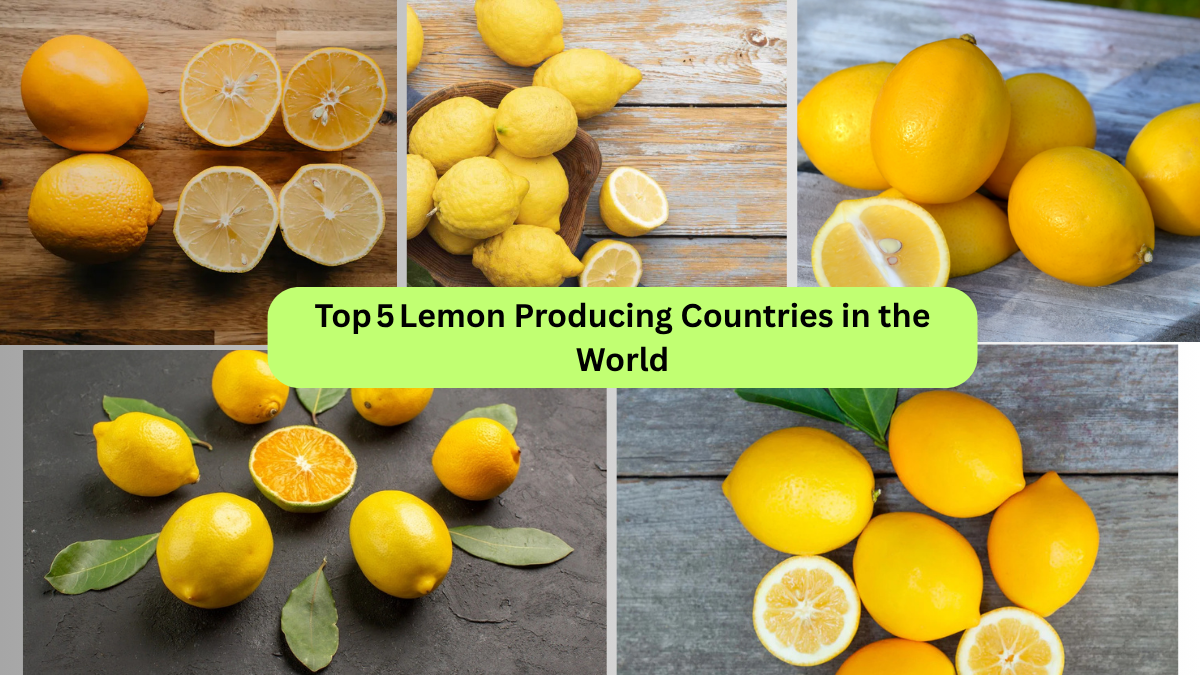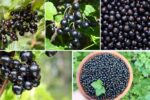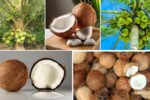Lemons, known for their refreshing zest and vibrant flavor, are one of the most versatile citrus fruits cultivated worldwide. From culinary delicacies to health-boosting remedies and household cleaning solutions, lemons hold an essential place in kitchens, markets, and medicine cabinets alike. As global demand for fresh produce, immunity-boosting foods, and natural wellness products rises, lemon production has become a significant agricultural industry in several countries.
But where exactly do most of the world’s lemons come from? In this detailed article, let’s uncover the Top 5 Lemon Producing Countries in the World, examining their production capacities, unique cultivation practices, and influence in the global market.
Global Importance of Lemon Production
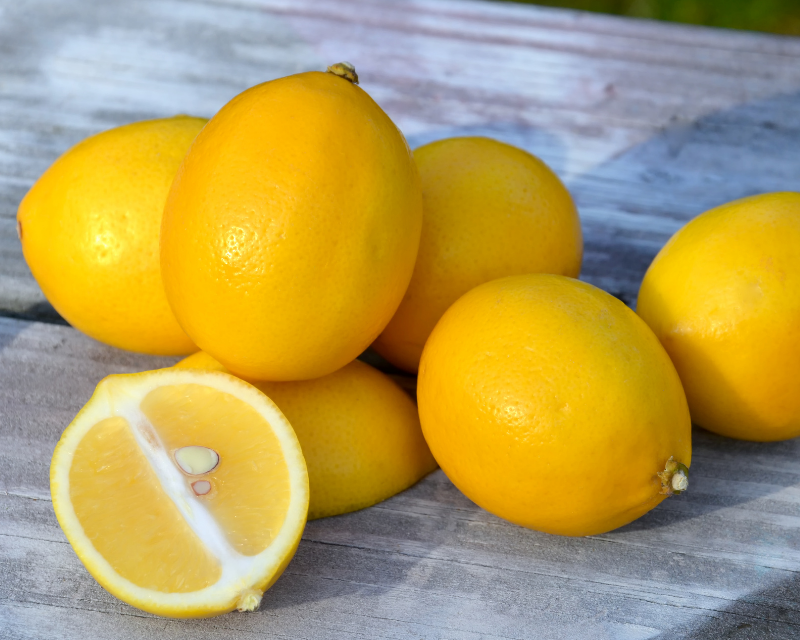
Lemons are a major agricultural commodity because they:
- Are rich in vitamin C, antioxidants, and essential oils.
- Play a central role in culinary, medicinal, and industrial applications.
- Support the economies of tropical and subtropical countries.
- Have high domestic consumption rates and strong export markets.
Now, let’s explore the global leaders in lemon production.
1. India — The World’s Largest Lemon Producer
Annual Production: Approx. 3.8 million metric tons
Global Market Share: ~18–20%
India stands as the largest lemon-producing country globally. Thanks to its vast cultivation areas and ideal climatic conditions, the country consistently tops lemon and lime production charts.
Key Lemon Growing Regions in India:
- Andhra Pradesh
- Maharashtra
- Gujarat
- Tamil Nadu
- Karnataka
What Makes India a Leader?
- Diverse climate: Tropical and subtropical zones across various regions.
- Wide range of varieties: Including Kagzi Lime, Eureka Lemon, Nepali Oblong, and Pant Lemon.
- Year-round availability: Due to staggered harvesting seasons across states.
- High domestic and export demand: Fresh lemons, pickles, lemon oil, and lemon-based herbal products are in huge demand both locally and abroad.
Fun fact: Lemons are integral to Indian culinary traditions and are considered auspicious in festivals and rituals.
2. Mexico — The Key Export Powerhouse
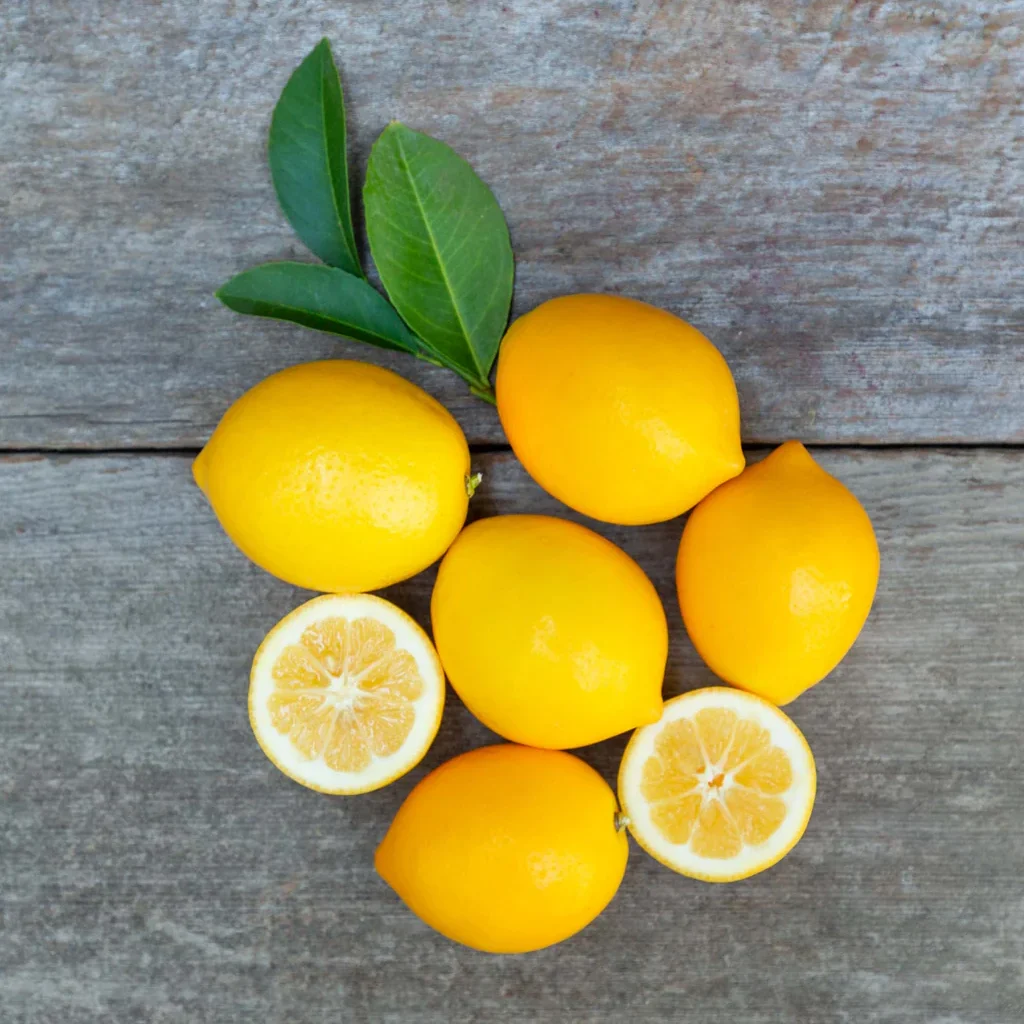
Annual Production: Approx. 3.1 million metric tons
Global Market Share: ~14–15%
Mexico is the second-largest lemon and lime producer globally and a major exporter to the United States, Canada, and Europe. Known for its high-quality Key limes and Persian lemons, Mexican citrus dominates North American markets.
Main Growing Areas:
- Veracruz
- Michoacán
- Oaxaca
- Colima
Why Mexico Excels:
- Favorable tropical climate and fertile volcanic soils
- Efficient harvesting and post-harvest management
- Well-established export logistics
- Strong U.S. market demand for fresh lemons, lemon oil, and processed products
Did you know? Mexican lemons play a starring role in guacamole, margaritas, and countless Tex-Mex dishes.
3. China — A Rapidly Growing Citrus Giant
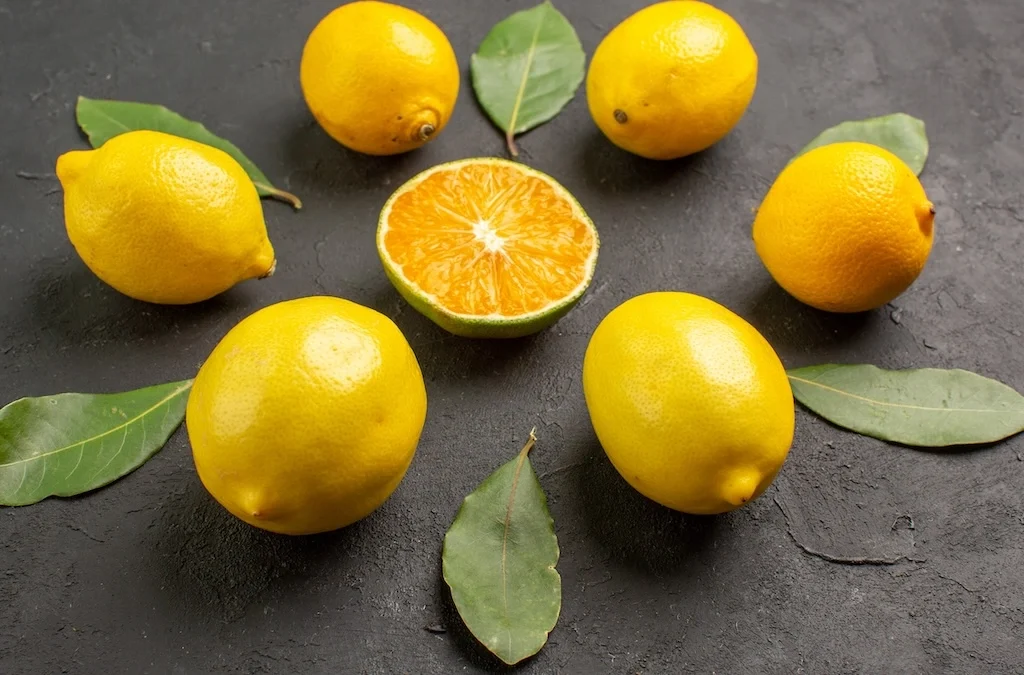
Annual Production: Approx. 2.6 million metric tons
Global Market Share: ~12%
China holds the third position in global lemon production. Although traditionally known for oranges and mandarins, China’s lemon cultivation has expanded significantly in recent years to meet increasing domestic demand.
Leading Lemon Producing Provinces:
- Sichuan
- Chongqing
- Yunnan
Factors Behind Growth:
- Modernized large-scale farming techniques
- Increased health awareness driving citrus consumption
- Government support for expanding agricultural diversity
China is also investing heavily in developing lemon derivatives like lemon tea, essential oils, and lemon-flavored snacks for its growing middle class.
4 Argentina — The World Leader in Processed Lemons
Annual Production: Approx. 1.8 million metric tons
Global Market Share: ~8.5%
Argentina, particularly the province of Tucumán, has established itself as the world’s largest exporter of processed lemon products, such as lemon juice, oil, and dried peel. While its fresh lemon export volumes are smaller than those of Mexico or Spain, Argentina dominates the industrial citrus segment.
Major Growing Areas:
- Tucumán
- Salta
- Jujuy
Key Advantages:
- Off-season production for Northern Hemisphere markets
- Exceptional fruit quality standards
- Highly developed citrus processing infrastructure
Fun fact: Argentina supplies over 70% of the global demand for lemon oil, widely used in perfumes, cleaning products, and cosmetics.
5 Brazil — South America’s Rising Citrus Producer
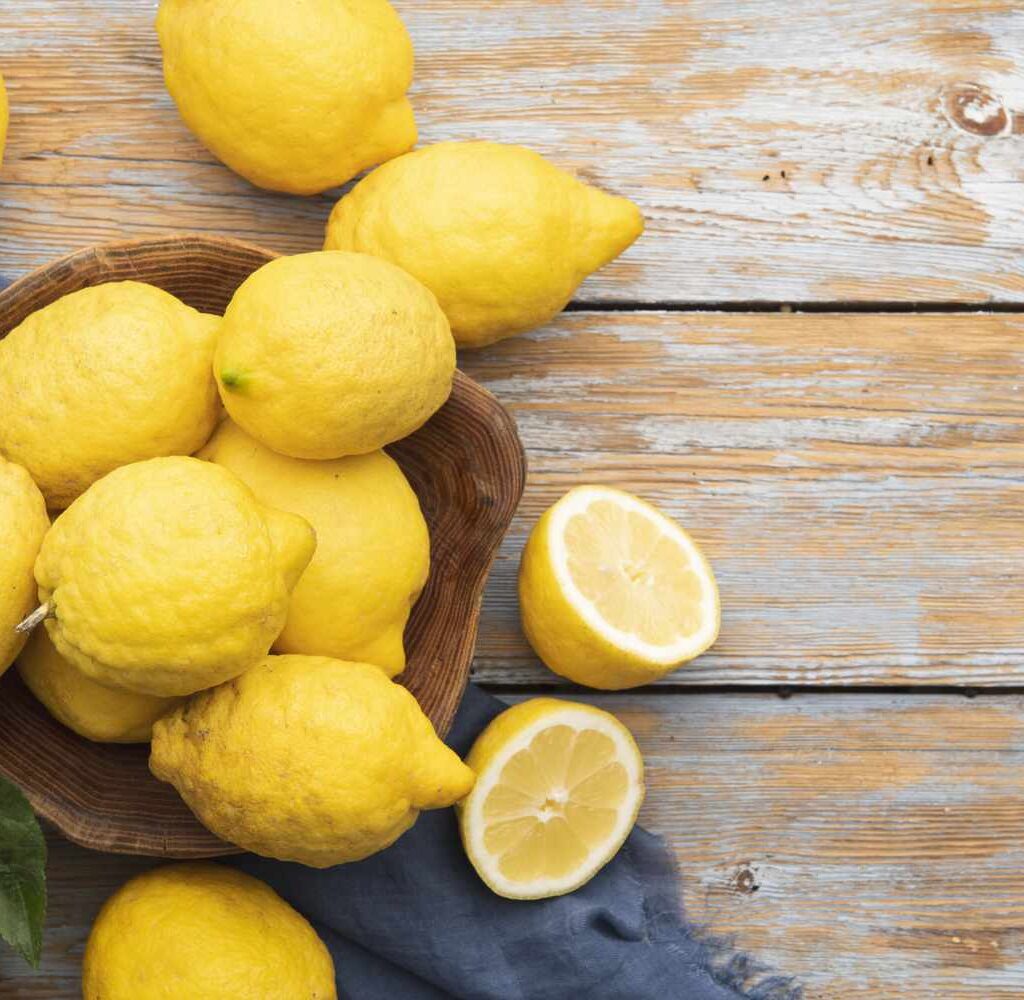
Annual Production: Approx. 1.6 million metric tons
Global Market Share: ~7.5%
Brazil, famous for its oranges, is also one of the top lemon producers in the world. With production concentrated in the São Paulo region, Brazil has seen steady growth in both fresh and processed lemon markets.
Key Lemon Growing Areas:
- São Paulo
- Bahia
- Minas Gerais
Strengths of Brazilian Production:
- Year-round growing seasons
- Strong domestic consumption
- Expanding exports to Europe and North America
- Integrated citrus farms that cultivate both oranges and lemons
Did you know? Brazil’s lemon consumption rises sharply during its hot, humid summers when lemon-infused drinks and dishes become household staples.
Global Lemon Production at a Glance
Here’s a quick comparison table:
| Rank | Country | Annual Production (Metric Tons) |
|---|---|---|
| 1 | India | 3.8 million |
| 2 | Mexico | 3.1 million |
| 3 | China | 2.6 million |
| 4 | Argentina | 1.8 million |
| 5 | Brazil | 1.6 million |
(Source: FAO & Global Citrus Industry Reports 2024)
How These Countries Shape the Global Lemon Market
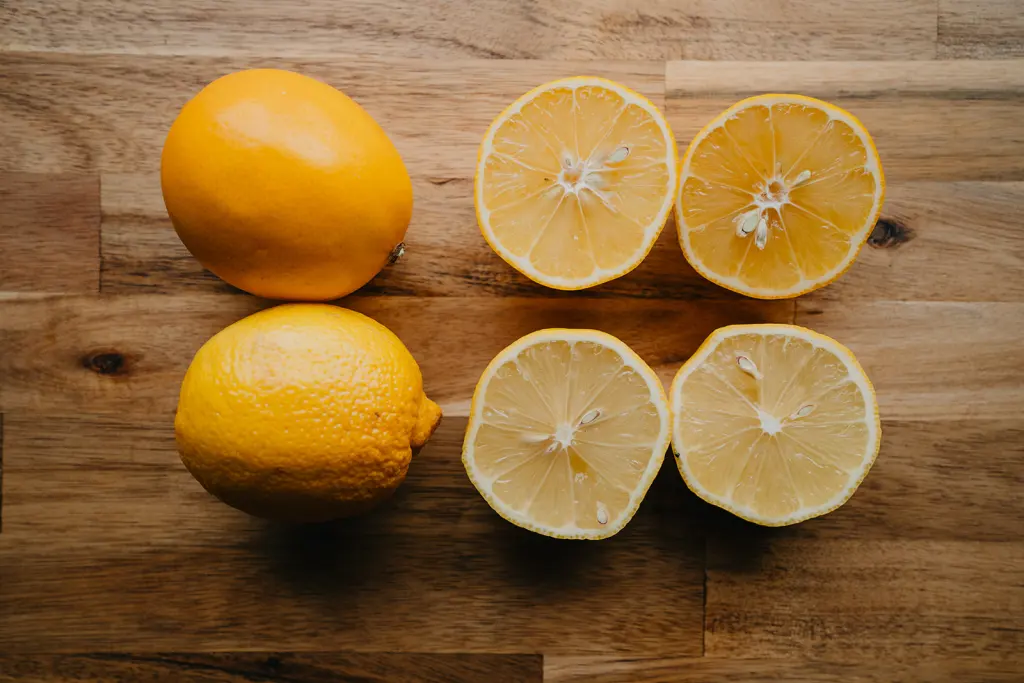
Together, these five countries account for over 60% of the world’s lemon and lime production. Their roles differ:
- India: High domestic consumption and export to Gulf, South Asia.
- Mexico: Leading fresh lemon supplier to the U.S.
- China: Rapidly growing domestic citrus market.
- Argentina: World’s top supplier of processed lemon products.
- Brazil: Balanced production for local and export markets.
Each country’s climatic advantages, infrastructure, and export networks help them maintain their competitive edge in a rapidly expanding market.
Final Thoughts
The global lemon industry is vibrant and competitive, driven by increasing demand for natural, health-boosting foods and beverages. From India’s traditional lemon drinks to Argentina’s essential lemon oils and Mexico’s lime-packed cuisine, lemons remain indispensable worldwide.
The top 5 lemon-producing countries—India, Mexico, China, Argentina, and Brazil—not only grow the majority of the world’s lemons but also shape international markets, price trends, and product innovations.
As trends like organic farming, cold-pressed lemon juice, and lemon-based health supplements gain momentum, these nations are poised to remain at the heart of the citrus world for years to come.
